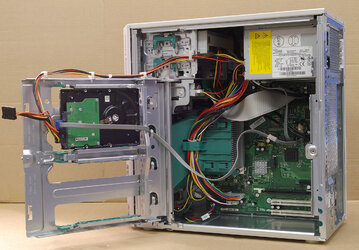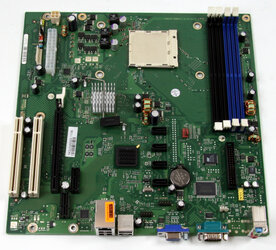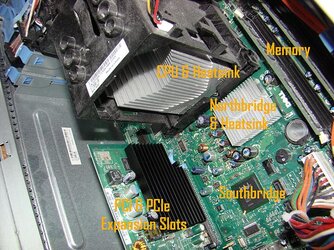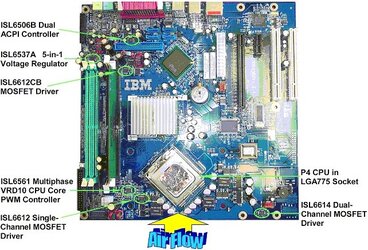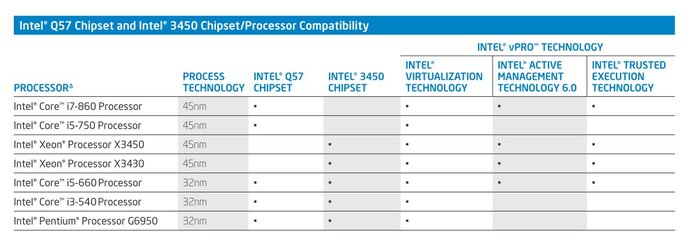Hi guys!
I am glad some people like me also like the BTX form factor. It was clearly superior to ATX in any way imaginable ... technical as well as optical and ergonomically.
And I got good news for BTX lovers: Fujitsu-SIEMENS (lateron just called Fujitsu) designed the best BTX systems -- they were actually engineered and produced in Germany! Not in China or Taiwan ...
Examples for the latest systems which shipped between 2009 and 2012 include the following:
- Fujitsu-SIEMENS C5730, E5730 and P5730 -- Intel Q43-based systems which support DDR2 800 and Core 2 Duo up to E8600 and Q9650 with 16 GB RAM, PCIe x16 etc. Micro, Desktop and Minitower cases of the finest quality!
- Fujitsu-SIEMENS C5731, E5731 and P5731 -- Intel Q43-based systems which support DDR3 1066 and Core 2 Duo up to E8600 and Q9650 with 16 GB RAM, PCIe x16 etc. Micro, Desktop and Minitower cases of the finest quality!
- Fujitsu-SIEMENS W280 -- Intel Q57-based workstation system which supports DDR3 1333 and Core i3, i5, i7 like Core i7 880 with 16 GB RAM, PCIe x16 etc. Bigtower cases of the finest quality!
- Fujitsu-SIEMENS W380 -- Intel 3450-based workstation system which supports DDR3 1333 and Core i3, i5, i7 and Xeon like i5 680 or Xeon X3470 with 16 GB RAM, 2 x PCIe x16 etc. Bigtower cases of the finest quality! Both DDR3 non-ECC and ECC RAM supported!
- Fujitsu-SIEMENS W480 -- Intel 3450-based workstation system which supports DDR3 1333 and Core i3, i5, i7 and Xeon like i5 680 or Xeon X3470 with 16 GB RAM, 2 x PCIe x16 etc. Bigtower cases of the finest quality! Both DDR3 non-ECC and ECC RAM supported!
Older systems include AMD Athlon 64 systems and Pentium 4 and D based systems from the same company, but also many earlier Core 2 Duo / Core 2 Quad based systems with lower specs than the most recent ones I listed above, since they are older, but with the same high build quality.
I am glad some people like me also like the BTX form factor. It was clearly superior to ATX in any way imaginable ... technical as well as optical and ergonomically.
And I got good news for BTX lovers: Fujitsu-SIEMENS (lateron just called Fujitsu) designed the best BTX systems -- they were actually engineered and produced in Germany! Not in China or Taiwan ...
Examples for the latest systems which shipped between 2009 and 2012 include the following:
- Fujitsu-SIEMENS C5730, E5730 and P5730 -- Intel Q43-based systems which support DDR2 800 and Core 2 Duo up to E8600 and Q9650 with 16 GB RAM, PCIe x16 etc. Micro, Desktop and Minitower cases of the finest quality!
- Fujitsu-SIEMENS C5731, E5731 and P5731 -- Intel Q43-based systems which support DDR3 1066 and Core 2 Duo up to E8600 and Q9650 with 16 GB RAM, PCIe x16 etc. Micro, Desktop and Minitower cases of the finest quality!
- Fujitsu-SIEMENS W280 -- Intel Q57-based workstation system which supports DDR3 1333 and Core i3, i5, i7 like Core i7 880 with 16 GB RAM, PCIe x16 etc. Bigtower cases of the finest quality!
- Fujitsu-SIEMENS W380 -- Intel 3450-based workstation system which supports DDR3 1333 and Core i3, i5, i7 and Xeon like i5 680 or Xeon X3470 with 16 GB RAM, 2 x PCIe x16 etc. Bigtower cases of the finest quality! Both DDR3 non-ECC and ECC RAM supported!
- Fujitsu-SIEMENS W480 -- Intel 3450-based workstation system which supports DDR3 1333 and Core i3, i5, i7 and Xeon like i5 680 or Xeon X3470 with 16 GB RAM, 2 x PCIe x16 etc. Bigtower cases of the finest quality! Both DDR3 non-ECC and ECC RAM supported!
Older systems include AMD Athlon 64 systems and Pentium 4 and D based systems from the same company, but also many earlier Core 2 Duo / Core 2 Quad based systems with lower specs than the most recent ones I listed above, since they are older, but with the same high build quality.
Last edited:
